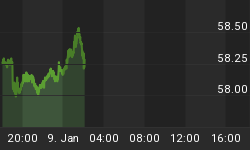The Geometric and Solar Time CITs
Precise timing is everything in the stock markets. For that reason over the last 2 decades, I had to discard many, many timing techniques that didn't meet the criteria of finding a major High or Low exact to the day or at most within 1 TD. Over time, in the last 25 years, I have found 2 proprietary timing techniques that have been consistent in pinpointing future Change in Trends (CIT), ie Highs and Lows within 1 TD. One is a geometric, mathematical timing CITs that are 70-80% accurate and the other is a Solar timing CIT that is close to 84-90% accurate.
Example of some long term CITs was the June 4 2012 major Low and the September 14 2012 major High. A medium Term CIT was on 4/19/13, which became the 4/18 major Low. I had a rare 3 long term geometric SPX CITs, covering Decades, all clustering on one date, Friday 6/1/12, which became Monday 6/4/12 major Low at the Open. This was predicted since February 2012 in the annual 2012 forecast report. http://timeandcycles.blogspot.com/2012/06/long-term-timing-points.html
Normal fixed cycles versus active Master Cycles.
Normal fixed Cycles expand and contract and is always +/- few weeks or months. Over time, I have found that for some reason, some historic cycles repeat day by day and this cycle is active for many weeks and sometimes many months, until they stop working and disappear. I have named these kind of cycles the Master Cycles, because they follow a certain numerology that can be found in the Bible as well as in Ved. With any of the Master Cycle and other cycles that are considered "active", all predicted Highs and Lows are often exact or at most +/- 1 TD. The main rule that I use is the Master Cycle is active as long as the predicted swing Highs and Lows are either exact or +/-1 TD and it is not considered active, ie it will be incorrect, if it exceeds this 1 TD variance of predicted Highs and Lows. The benefit is you will know right away if the cycle is incorrect within 1 trading day. If the Cycle is not "active" anymore, it becomes "dormant" and it should not be used for future predictions. Both fixed and Master cycles should be used, but normal fixed cycles, does not have the active Master Cycle's accuracy.
Time & Cycle CIT Order of importance: In my work, I consider the active Master Cycle's Highs and Lows (CITs) as most important as they are +/-1 TD, followed by Solar Time CITs, then Geometric Time CIT, which are the most reliable Time CITs. All other time CITs, like squares, astros, numerology, etc. are only used to confirm the active Master cycles and the two dominant Time CITs. When both Time and active cycles support each other, it increases the accuracy to 90-95% of finding a CIT, a High or Low.
Future long term geometric CITs that were calculated since the beginning of the year:
1. There are two medium Term geometric Time CITs due on exact dates in July 2013.
2. There is a long term geometric CIT, covering decades that project a certain date in August 2013 that should be an important High or Low.
3. There is a long term geometric CIT due in September 2013 as well.
What's next short term?
The yellow vertical lines in the chart above are the last 13 Option expiration weeks, which has a generally neutral to bullish bias, with 4 down and 9 neutral to up. Also note Option Expiration weeks often mark short term Highs or Lows as shown by the arrows on the chart. At times, the High or Low arrives 1 day before or after OE week.
There is a 5/20 geometric and 5/21 Solar CIT that should most likely result in a 5/20-21 short term High. The 6 Lunar Month Cycle chart above supports a 5/20 CIT. It is possible we rally into the upper channel resistance at 1678-80 SPX.
Everyone needs valuable Time and Cycle techniques in their toolbox to make smarter and more profitable Investments decisions.


















